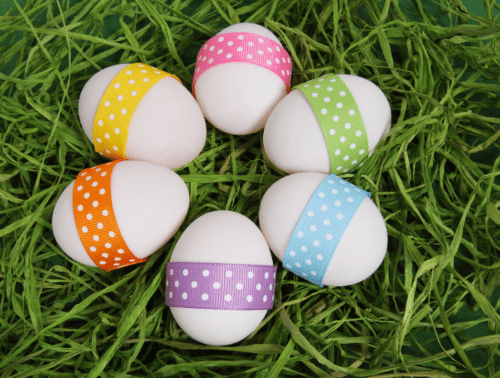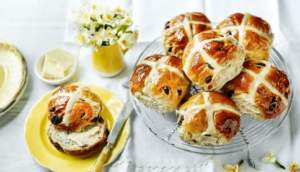Holy Week and Easter traditions in England

The Holy Week, the week before Easter (Pascua), in Britain is quite different to the Semana Santa we celebrate in Spain: processions are not part of British Holy Week celebrations and they don’t eat torrijas either, although they do have other tasty traditional food! Let’s have a look at their traditions and see how they celebrate Holy Week and Easter in Great Britain.
Maundy Thursday is the Thursday before Easter Sunday, or what we know as “Jueves Santos”. There is an ancient tradition that dates back to the 13th Century where the sovereign of England gives “Maundy Money”, which are coins specially minted for this day, to a group of senior citizens (one man and one woman for each year of the Queen’s age).
Hot Cross Buns: all holidays have special food and Easter is no exception. Hot Cross Buns are bread buns with currants, raisins and  spices and they have a cross on the top made with sugar icing. They are delicious toasted and spread with butter!
spices and they have a cross on the top made with sugar icing. They are delicious toasted and spread with butter!
Simnel Cake: it is said that this cake has been eaten since medieval times. It is a fruit cake with layers of marzipan. Sometimes it is decorated with eleven marzipan balls that represent the eleven apostles (except Judas).
The Easter Bunny: why are there so many bunnies in shops and restaurants at Easter time? Well, Easter is the time of resurrection, of new life and fertility and that’s why the rabbit is one of the most representative symbols of this time of the year. The exact origins of the Easter bunny are unknown, but it seems that it comes from a pagan tradition: the festival of Eastre or Eostre, whose animal symbol was a rabbit.
Easter Eggs: just like the rabbit, the egg is a symbol of new life. Painting eggs with lots of colours is a fun tradition in many countries, as well as the Easter egg hunt, where parents hide eggs all over the garden and children have to find all of them on Easter Sunday – a good way to keep them busy! And of course Chocolate Easter eggs are a must! This tradition may come from the period of Lent, as this is the period where Christians abstain from eating eggs and meat so when Easter comes, it means they can eat eggs again.
Morris Dancing: although this dance is not exclusive to Easter, it is often performed in rural England at this time. It is a type of folk dance which is very complex and involves sticks and handkerchiefs. Morris dancers usually dress in white and wear straw hats, although this may vary depending on the area. Click here if you want to see a Morris dance https://www.youtube.com/watch?v=0ionTgFxPgg






